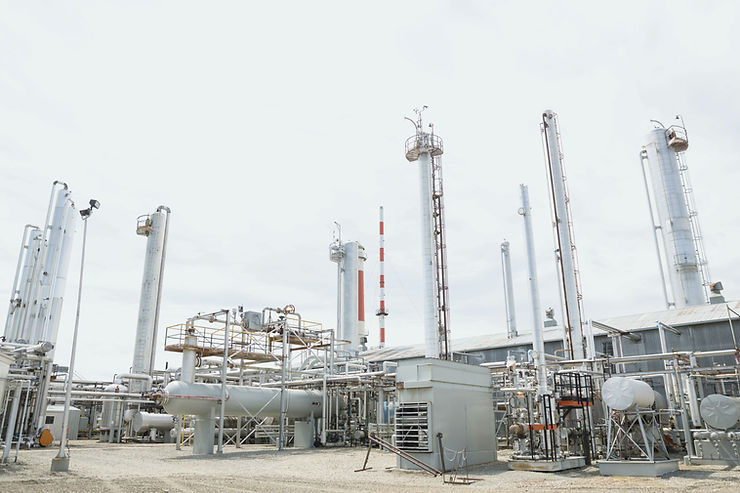Alberta Environment and Parks today released the Vent Gas Reduction Protocol for public comment. This is a totally re-booted version of the Protocol that was previously known as the Solution Gas Protocol, and represents a significant change to how oil and gas sites can create Offset Credits from projects that avoid venting.
The impetus behind this overhaul is the Alberta Energy Regulator's Directive 060 (here), which governs flaring, incineration and venting activity in the upstream oil and gas sector.

Directive 060 is a comprehensive and complex regulation and includes a number of general, site-wide requirements as well as very precise, equipment-specific requirements. Unsurprisingly, therefore, there's a lot going on in the draft Vent Gas Reduction Protocol to try to ensure the updated Protocol aligns with the regulatory requirements of the Directive.
The draft Protocol is available here, but for a high level explanation of this highly technical document, read on!
Let's start with a quick overview of the general requirement of Directive 060 with regards to venting. Directive 060 sets a site-wide venting limit known as the Overall Vent Gas (OVG) Limit, which is 15,000 m3/month of vent gas. This covers non-routine (such as emergency) and routine venting sources, including solution gas. In addition, for new sites (those that start producing on or after Jan 1, 2022) it also sets a Defined Vent Gas (DVG) Limit, which is 3,000 m3/month of vent gas. The DVG is applicable to a much tighter scope of routine sources only. Alternatively, operators of crude bitumen batteries only can choose to have those facilities regulated as a fleet, rather than individually, in which case they will be covered by the Crude Bitumen Fleet Average (CBFA) (a fleet average of 1500 m3/month of vent gas) instead of the DVG.
OK, so how does this relate to the Vent Gas Reduction Protocol? Well, the opportunity for creating Offset Credits under the draft Vent Gas Reduction protocol is based on using the regulatory additionality space that exists under these Directive 060 limits (OVG, DVG and CBFA). Regulatory additionality simply means going beyond what is legally required. So, in plain language, this means oil and gas operators have an opportunity to create offset credits for actions that reduce vent gas below the limits set by Directive 060.
To deal with this concept, the draft Vent Gas Reduction protocol proposes a novel type of baseline, called a capped dynamic baseline. While the details of calculating this can be fairly complex, the concept is not: it Protocol basically caps the offset credits that can be created by a Vent Gas Reduction project to the lower of
a) the actual amount of vent gas collected by the project, or
b) the "cap". The cap for a site is set by the relevant Directive 060 limit, adjusted to deduct any remaining site venting (as this remaining venting also counts towards the cap).
To illustrate, let's take the fictitious example of Site Bon, operated by the equally fictitious Jovi Energy Ltd. To keep things simple, we'll assume that Site Bon started producing in 2021, and isn't a crude bitumen battery, so only the OVG Limit applies.
In the baseline (i.e. pre-project) Site Bon is venting 20,000 m3/month. To come into compliance with the OVG limit of 15,000 m3/month, Jovi Energy Ltd. therefore needs to reduce venting at this site by 5,000 m3/month and can do this by implementing a limited vent gas conservation project. However, on evaluating its options, it instead decides to implement a comprehensive vent gas conservation project and installs the infrastructure to tie the majority of its various vent gas sources into its existing sales gas pipeline. This vent gas conservation project collects 18,000 m3/month - a substantially larger reduction than Jovi Energy Ltd. was required to make for Directive 060 compliance - but leaves behind 2,000 m3/month of remaining venting from sources that were too difficult to tie into the Project. Site Bon now has only 2,000 m3/month of venting instead of the 15,000 m3/month it was allowed to vent under the OVG.
Remember, the draft Vent Gas Reduction Protocol limits offset credits to the lower of the actual reduction or the cap. In our illustration, the actual reductions at Site Bon are 18,000 m3/month, but the cap is only 13,000 m3/month (the OVG, which is 15,000 m3/month, minus the remaining venting, which is 2,000m3/month). So in this case, Jovi Energy Ltd can create offset credits for 13,000 m3/month from their successful vent gas conservation project.
Simple!
The draft Vent Gas Reduction Protocol represents an interesting interplay between the 'stick' of regulation (Directive D060) and the 'carrot' of offsets, and as designed ought to encourage oil and gas operators to try and reduce venting not by the minimum level necessary, but to the minimum level possible. Less venting = less waste and fewer GHG emissions. That's a win for both the industry and the environment.
Agree? Disagree? Well, now's your chance to make your voice heard! Public comments on the draft Protocol are being accepted until end of day August 17, 2021.


Comments